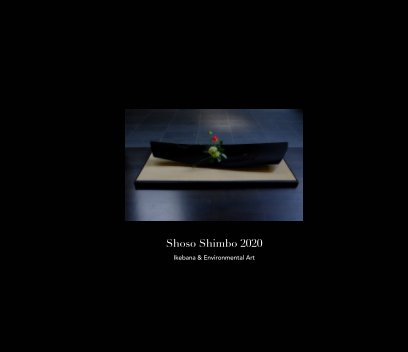Join an online learning community using Zoom. Ikebana Dojo is not an online ikebana workshop, in which you can create your ikebana work by simply following instructions. Ikebana Dojo asks you to be more proactive. It is a great aid for independent ikebana training (Jishu Tore - in Japanese).
A series of sessions, Four Ikebana Principles starting from 7 November 2020.
When:
Balance: 4:00pm - 4:30pm, Saturday 7 November 2020 Fully Booked
Balance: 4:45pm - 5:15pm, Saturday 7 November 2020
Balance: 4:00pm - 4:30pm, Saturday 14 November 2020
Movement: 4:00pm - 4:30pm, Saturday 21 November 2020
Contrast: 4:00pm - 4:30pm, Saturday 5 December 2020
Pattern: 4:00pm - 4:30pm, Saturday 19 December 2020
How much: $10 for one session
Details: http://www.ikebanadojo.org/2020/08/four-ikebana-elements.html
Please follow the site by subscribing at “Follow by Email”
Note: Now you can watch a video tutorial for free. Subscribe our Youtube Channel. http://www.ikebanadojo.org/2020/07/ikebana-dojo-contrast-1.html
About Four Ikebana Principles Level 2: In “Four Ikebana Principles 2”, we will review classic basic styles in ikebana. You will learn that each basic style contains in itself all of the four ikebana principles, Balance, Movement, Contrast and Pattern. Rather than learning all at once, we focus on each principle one by one in this series. If you feel your foundation is a bit weak, this series may help you to boost your artistic development.
Following diagrams is a great way to learn ikebana, especially for beginners. It will provide you with solid foundation to develop as an artist in ikebana or any other fields. If you follow diagrams, your work reveals ikebana principles almost automatically, without paying much attention to them. That is a great aspect of learning basic styles.
But it has a shortfall.
Following diagrams or classic formulas is not the end of learning ikebana. At a certain stage you have to move to be free. A better way is to follow materials rather than formulas. Rather than manipulating materials to fit into the set formula, find the energy of life in natural materials, and follow it.
This process is often the transition from creating basic styles to free style arrangements. Many ikebana practitioners have found it difficult to make that transition. While their basic styles had ikebana principles, their free style arrangements may contain hardly any ikebana principles. Your work is not ikebana without ikebana principles. Unfortunately, many ikebana courses have not addressed the difficulty in this transition properly.
The problem is that you are expected to have acquired ikebana principles intrinsically without any explicit explanation after practising basic styles. It is assumed that you will be able to start making free style arrangements based on having acquired a good understanding of ikebana principles just from following the diagrams. However, can we expect all ikebana practitioners to be really aware of the ikebana principles at the end of study of basic styles?
To move to making free style arrangements smoothly, you need to BE AWARE what you have learned in basic styles, in particular four ikebana principles. Ikebana Dojo Curriculum was designed to help you be aware of them. We hope many people will have a better understanding of free style ikebana.

























